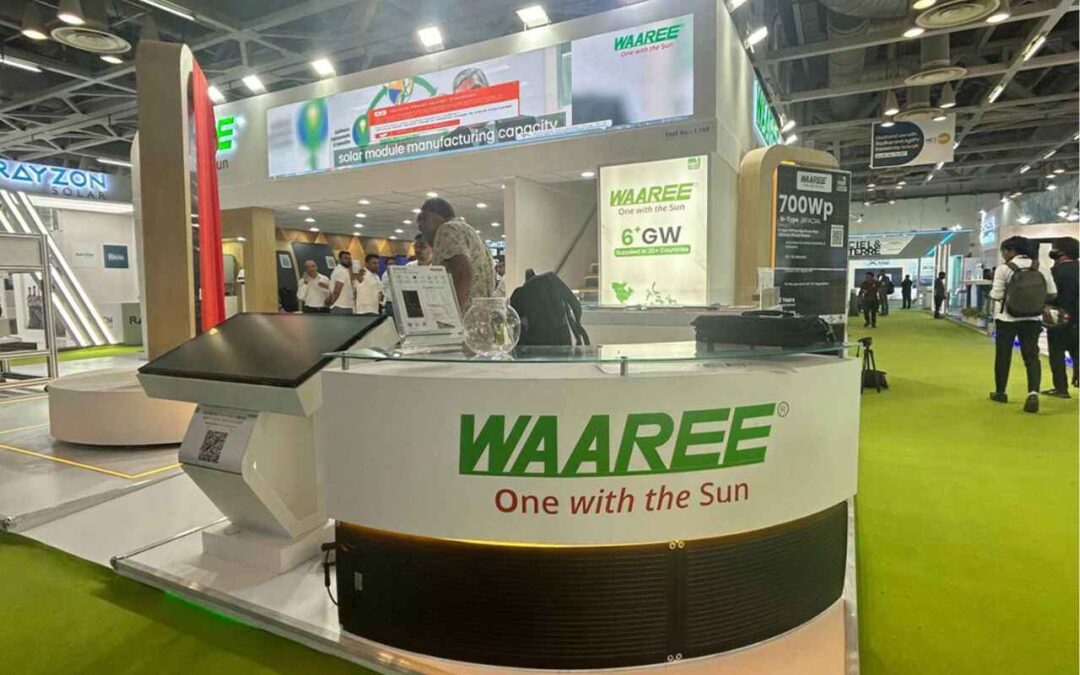India’s renewable energy sector is poised for a major investment surge, with projections exceeding $250 billion by 2030. Of this, solar photovoltaic (PV) projects are expected to attract around $15.5 billion, while battery manufacturing could see inflows of ~$2.7 billion, underscoring the nation’s accelerating clean energy transition.
To enhance grid reliability and energy storage capacity, the government has introduced a Rs. 5,400 crore Viability Gap Funding (VGF) scheme for the development of 30 GWh of Battery Energy Storage Systems (BESS). This initiative is projected to draw investments of nearly Rs. 33,000 crore and play a critical role in supporting large-scale renewable energy integration.
In a further boost to renewable infrastructure, the Ministry of New and Renewable Energy (MNRE) has proposed establishing 13,000 MW of renewable energy capacity coupled with a 12,000 MWh BESS project in Ladakh. On 18th October 2023, the Cabinet Committee on Economic Affairs (CCEA) approved the construction of an Inter-State Transmission System (ISTS) to enable efficient power evacuation and national grid integration, marking a significant step toward harnessing Ladakh’s renewable energy potential.
Following are a few companies with capex plans in the BESS ecosystem:
Waaree Energies Limited
With a market cap of Rs. 96,905 crores, the stock moved down by around 2 percent on BSE to close in the red at Rs. 3,368.95 on Tuesday. In Q2 FY26, the company announced a total capex plan exceeding Rs. 25,000 crore. The company currently has an installed module capacity of ~18.7 GW and a cell manufacturing capacity of 5.4 GW, supported by a robust order book of around Rs. 47,000 crore.
On 1st October 2025, the company’s Board approved an additional capex of ~Rs. 8,175 crore to further enhance production capacities across key segments. This includes expanding Storage Cell and Battery Energy Storage System (BESS) capacity from 3.5 GWh to 20 GWh (Rs. 8,000 crore), Electrolyser capacity from 300 MW to 1 GW (Rs. 125 crore), and Inverter capacity from 3 GW to 4 GW (Rs. 50 crore).
The company’s first phase of its 3.5 GWh battery manufacturing project is already under construction and will begin with assembly operations, followed soon by cell production. Commercial production for Phase 1 is expected in the next financial year, with Phase 2 commencing within 12 months thereafter. By FY28, both phases – including pack and cell lines – are expected to be fully operational.
Waaree Energies Limited is India’s largest solar module manufacturer and leading renewable energy company. The company offers a wide range of solar solutions, including panel manufacturing, EPC services, project development, and rooftop solar systems.
Reliance Industries Limited
With a market cap of Rs. 19.91 lakh crores, the stock moved down by around 1 percent on BSE to close in the red at Rs. 1,471.85 on Tuesday. RIL is making steady progress toward its ambitious clean energy goals, which include establishing 20 GWp of solar PV manufacturing capacity and a 100 GWh battery giga-factory. The company has achieved significant milestones in the construction and engineering phases of its Battery Energy Storage giga-factory at Jamnagar, with 40 GWh of manufacturing capacity currently under rapid development.
Once operational, the facilities in Jamnagar will enable the company to produce round-the-clock renewable power, leveraging both in-house solar PV modules and battery energy storage systems.
The company is setting up a battery giga-factory, scheduled to be operational by 2026, to manufacture battery chemicals, cells, packs, and containerised energy storage solutions, along with a battery recycling facility. The company aims to produce Lithium Iron Phosphate (LFP)-based batteries at globally competitive lifecycle costs and is actively fast-tracking the commercialisation of sodium-ion battery technology.
Further, in 2023, the company committed Rs. 60,000 crore investment towards constructing world-scale, integrated facilities to support this ecosystem. These include a fully integrated solar photovoltaic manufacturing complex, advanced energy storage systems for cell and battery pack production, electrolyser manufacturing facility, power electronics and semiconductor development, basic and auxiliary material manufacturing, and dedicated R&D facilities for all New Energy technologies.
HEG Limited
With a market cap of Rs. 11,180 crores, the stock moved down by around 1 percent on BSE to close in the red at Rs. 579.35 on Tuesday. HEG Limited stated that its subsidiary, HEG Greentech, is currently setting up a 20,000-ton anode manufacturing plant, which is expected to become operational by March 2027, with revenue generation commencing thereafter.
HEG Limited has outlined a total capex plan of Rs. 1,800-1,900 crore for its 20,000-ton capacity expansion project. Of this, the company has already infused Rs. 750 crore as equity, while the remaining amount will be financed through a mix of internal accruals and debt, with financial closure currently underway.
The expansion, expected to be completed over the next two to three years, will be funded in a phased manner, leveraging HEG’s strong cash generation capabilities. The company anticipates a cash outflow of approximately Rs. 1,000 crore towards capex, covering both anode and graphite projects, during the current and following financial year.
At present, HEG Greentech derives revenue from two key business verticals – its hydropower assets in Himachal Pradesh and its battery subsidiary, RePlus. Together, these businesses are projected to deliver revenue of Rs. 500-600 crore and EBITDA of Rs. 200-225 crore in FY26.
The company further indicated that other projects under the HEG Greentech platform are still in the development phase and are expected to commence operations by FY28, at which point a more substantial increase in revenue and EBITDA contribution is anticipated.
Adani Green Energy Limited
With a market cap of Rs. 1.75 lakh crores, the stock moved down by around 2 percent on BSE to close in the red at Rs. 1,085.9 on Tuesday. Targeting a 5 gigawatt (GW) capacity addition during FY26, Adani Green Energy Ltd said it expects to incur a capital expenditure of an estimated Rs. 31,000 crore during the ongoing fiscal. It is more or less fully funded by debt and equity.
The company stated that this investment is almost fully funded through a mix of debt and equity, reflecting a balanced and well-structured financial approach to support its ongoing expansion in India’s renewable energy sector.
Written by Shivani Singh
Disclaimer

The views and investment tips expressed by investment experts/broking houses/rating agencies on tradebrains.in are their own, and not that of the website or its management. Investing in equities poses a risk of financial losses. Investors must therefore exercise due caution while investing or trading in stocks. Trade Brains Technologies Private Limited or the author are not liable for any losses caused as a result of the decision based on this article. Please consult your investment advisor before investing.






